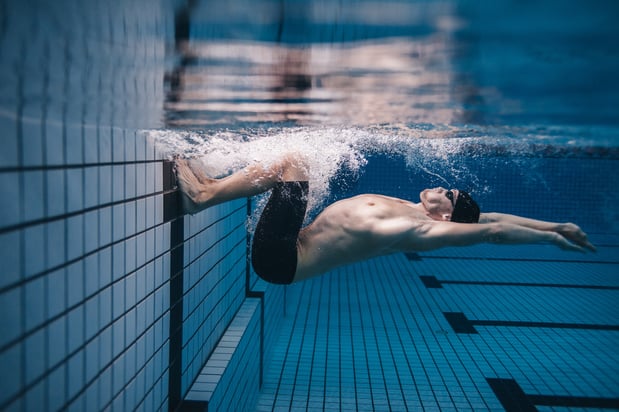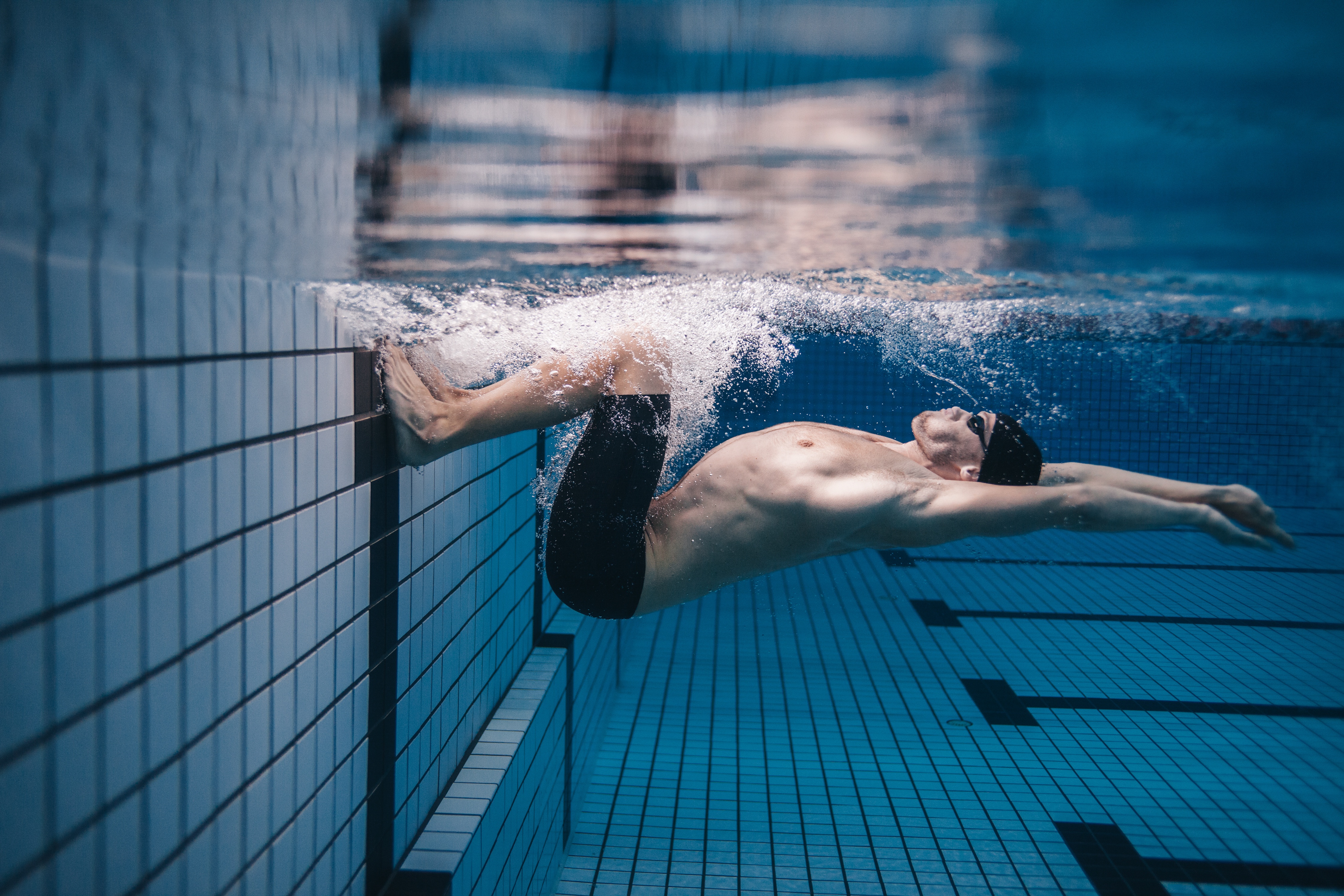The Importance of Dryland Training for a Better Underwater Dolphin Kick

Underwater dolphin kicking has completely transformed the sport of swimming. Considered as swimming’s fifth stroke, the dolphin kick is the best way to improve overall race times and efficiency in the pool. The kick allows swimmers to move faster than any surface stroke since there is less resistance underwater. The purpose of underwater kicking is not to generate speed, but rather to delay the slowing down process from powerful starts and turns for as long as possible. In order to do this, swimmers need to form a tight streamline while incorporating a powerful kick to minimize the water resistive force. Developing a powerful underwater kick is not an easy task. However, effective dryland training and working hard in the pool are key to mastering the dolphin kick.
Flexibility and Hip Mobility
The kicking motion isn’t only about leg strength. It requires the swimmer’s entire body to crack like a whip, which creates a fluid wave that starts at the core and increases in amplitude as it travels down through the toes. Flexibility enables athletes to create more force when muscles contract and move. By increasing the range of movement, vital energy is saved, technique improves, and the swimmer is able to swim faster, harder, and longer. It also prevents injury, which is very common amongst swimmers with poor flexibility. Additionally, increasing hip mobility with dryland training will make athletes more powerful and dynamic in the water. Hip stability and mobility means that athletes are able to move through an optimal range of motion and produce or absorb force through the hip joint. By increasing mobility and flexibility in the hips with the proper stretches and exercises, athletes will become stronger and maximize injury prevention. Here are a series of exercises to incorporate in dryland training that will enhance flexibility and hip mobility for swimmers.
Hip Flexor Stretch
Walking Spiderman
Lateral Squat
Flexibility and Ankle Mobility
Most swimmers are transfixed on strengthening shoulders and often neglect other parts of the body. While a swimmer’s hip and core muscles act as a driving force, the feet are solely responsible for pulling a swimmer through the water. A proficient dolphin kick should be done at a fast pace and the swimmer’s ankles should snap up and down quickly. Studies have found that ankle flexibility is directly related to kicking speed and more than 75 percent of the propulsive force of the dolphin kick comes from snapping the ankle (Binns, 2008). Thus, the greater range of motion in the ankle allows for greater force production, which helps an athlete to accelerate and move through the water faster. Additionally, the most elite swimmers are able to bend their ankles beyond that of a ballerina’s pointed toe. Ultimately taking the time to increase ankle strength and mobility during dryland training can increase a swimmer’s force production and improve overall performance. To learn more about why swimmers need dryland training check out this article.
Recap
It is important to recognize how dryland training can help put swimmers ahead of competitors. Olympian Kara Lynn Joyce describes how serious swimmers must learn to develop their underwater dolphin kicking while they are developing. She explains, “It’s an essential part of training. It’s been integrated into all four strokes now. It’s a skill that I didn’t learn until later in my career, but kids are learning it at a much younger age now. It’s making them faster than ever” (SwimSwam, 2015). Races often come down to precious hundredths or tenths of a second, so having every bit of speed makes a significant difference. To learn more about swim-specific dryland training for swimmers check out this article.
Related Posts

The Best Bench Press Variation You’re...
This post is part of our Coaches Corner series with Taylor Rimmer. Taylor is NSCA-CPT, StrongFirst...

Does Powerlifting Harm Heart Health?
A recent study has discovered that a 12-week supervised strength training program (SSTP) may result...

Barefoot Running: Is It For You? |...
Run Free: Consider Less Cushion
Updated October 2020:
With more athletes looking for ways to...
.png?width=150&height=50&name=BRIDGEBLOG(1).png)

